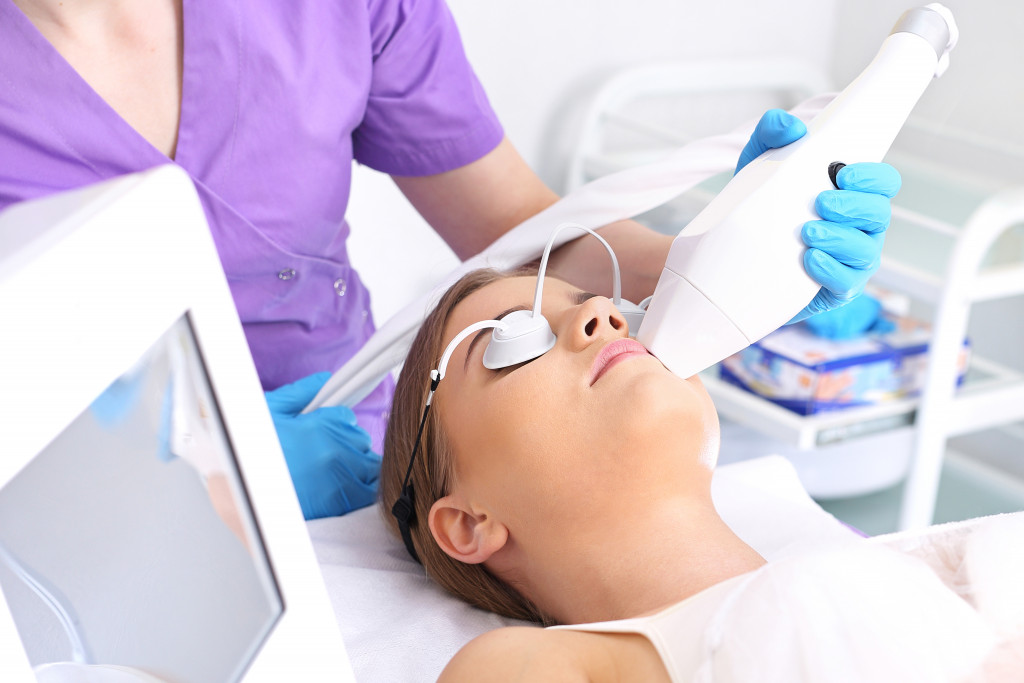- Micro-scars are subtle skin indentations caused by sun damage, acne, aging, skin trauma, and genetics.
- Sun exposure damages the skin’s collagen and elastin, leading to micro-scarring.
- Treatments for micro-scars include dermal fillers, chemical peels, microdermabrasion, laser therapy, and topical treatments.
- Dermal fillers plump the skin, while chemical peels exfoliate and reveal new skin.
- Consultation with a dermatologist is crucial to identify the most suitable treatment for individual skin needs.
Many people strive for a clear, smooth complexion. But sometimes, despite our best efforts, tiny bumps and indents appear on our cheeks. These small imperfections are known as micro-scars and can be frustrating and difficult to treat. Here’s what you need to know about micro-scars, how they happen, and what you can do about it.
Micro-Scars on Cheek
Micro-scars are tiny indentations in the skin caused by many conditions. They can range from a few millimeters to a couple of centimeters. Micro-scars are generally subtle and not immediately noticeable, but they can be frustrating when they become more pronounced.
What Causes Micro-Scars?
There are many reasons for micro-scars. Here are some of them:
1. Sun Damage
Excessive sun exposure can lead to the formation of micro-scars on your cheeks. This happens when the sun’s UV rays penetrate deep into your skin, damaging the collagen and elastin fibers that keep it plump and smooth. Over time, this damage accumulates, developing tiny bumps and indentations on your cheeks.
2. Acne
Acne is a common culprit of micro-scars on cheeks. When a pimple or cyst forms on your cheek, it can cause inflammation and damage the surrounding skin. Even after the blemish has healed, scar tissue can remain, resulting in tiny bumps or indentations.

3. Aging
As you age, your skin naturally loses collagen and elastin, which can cause it to sag and develop wrinkles. But losing these supportive fibers can also lead to micro-scars forming on your cheeks. Without enough collagen and elastin, your skin becomes more susceptible to damage from the sun, pollutants, and other environmental factors.
4. Skin Trauma
Skin trauma, such as injuries or surgical procedures, can form micro-scars on the cheeks. The skin’s response to injury is to repair the damage by creating new collagen fibers. However, the alignment and quality of these new fibers might not match the original skin tissue, resulting in the formation of a scar. These scars can be tiny, subtle, and spread out, appearing as micro-scars.
5. Genetics
Finally, micro-scars on your cheeks may be a result of your genetics. Some people are predisposed to developing certain types of scarring, including those that are tiny and less noticeable. If this is the case, it may be difficult to eliminate micro-scars, but treatments are still available to improve your skin’s overall appearance.
Dealing With Micro Scars
Thankfully, there are various ways you can deal with micro-scars. Here are five ways:
Dermal Fillers
One of the most popular treatments for micro-scars is the use of dermal fillers, such as Restylane and Juvederm. These fillers help plump the skin around the scar, making it less noticeable. You can get fuller, more defined cheeks with dermal fillers. Additionally, it can prevent your skin from sagging and developing wrinkles.
Chemical Peels
Chemical peels are an effective treatment for improving the appearance of micro-scars. They involve the application of a chemical solution to your skin that makes it eventually peel off, revealing new, smoother skin underneath.
Microdermabrasion
This procedure utilizes tiny crystals to exfoliate the surface of your skin, removing the outer layer of dead skin cells. This process helps to stimulate the production of new skin cells and collagen, helping to reduce the visibility of micro-scars.

Laser Therapy
Laser therapy is a popular treatment for micro-scars. The laser energy stimulates collagen and elastin production in your skin, promoting natural healing and reducing the appearance of scars.
Topical Treatments
A wide range of topical treatments are available, including retinoids and vitamin C serums. These treatments can help to boost collagen production and speed up cell turnover, helping to smooth out the skin and reduce the appearance of micro-scars.
While micro-scars can be a source of frustration, understanding their causes and the range of available treatments can provide some comfort. Numerous ways exist to manage and reduce micro-scar visibility, from dermal fillers and laser therapy to topical treatments with retinoids or vitamin C.
It’s paramount to remember that everyone’s skin is different, and what works for one person may not work for another. Therefore, it’s advisable to consult with a dermatologist or skincare professional to determine the most suitable treatment for your specific needs. Don’t let micro-scars hold you back; with the proper care and treatment, your skin can regain its smooth, clear complexion.
